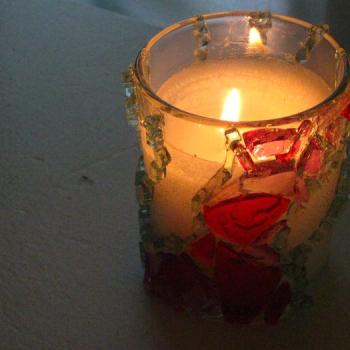Take her counsel. Take her comfort. Yes—even take her tips. (You will need every one of them along your journey.) Best of all, though, please take with you a measure of Sally Kempton's spirit—the irresistibly fun part of her who recognizes that meditation should not merely be a lifeline, or a salvation, but should also be an adventure, nothing less than a stupendous exaltation, a thrilling revolution of the self. What else, after all, are we going to do with our short, wondrous lives that could possibly be more important than transforming ourselves, molecule by molecule, into an experience of pure love?
Embrace that teaching, and watch your mind start to change.
And then watch your life start to change.
As Sally puts it so beautifully: "Let the inner dance unfold." Why not start now?
-- Elizabeth Gilbert
August, 2010
Introduction: Awaking to Meditation
An excerpt of Meditation for the Love of It, by Sally Kempton
One summer afternoon during a meditation retreat, I discovered that I contain the entire universe. It happened quite unexpectedly, all in a rush. I was sitting with my eyes closed in a room with several hundred other people, very much aware of the sensations in my body and of the faint rustles, coughs, and other sounds around me. The next thing I knew, there was a kind of implosion. Instead of being around me, the room with all its sensations and sounds was inside me. My awareness started to swell until I could feel the earth, the sky, and even the galaxy inside me. In that moment, I understood, with a surety that was both exhilarating and terrifying, that there is only one thing in the universe—that it is Awareness, and that Awareness is me.
The experience faded after an hour or so, but the understanding it gave me has never gone away.
At the time, I'd been traveling a winding spiritual path for a couple of years. Like so many people, I started meditating not because I longed for enlightenment, but because I was in a moderate life-crisis, and hoped meditation would make me feel better. I was living in New York, writing for Esquire, New York Magazine, and the Village Voice, leading the life that my left-wing humanist upbringing had laid out for me, priding myself on my hipster creds. On the outside, it was fine. I had an advance from a major publisher, a new boyfriend whom I was sure was the love of my life, a rent-controlled apartment—and a chronic case of restlessness and slight despair that never really went away. I'd already investigated marriage, politics, romance, psychotherapy, and the fruits of money without discovering an antidote to my low-grade emotional pain. Meditation drew me because it seemed like a way of getting to the roots of myself. Even in those days, when meditation was still considered an activity for saints, hippies, and other eccentrics, it was supposed to be a great way to settle the mind.
My new boyfriend happened to be a seasoned tourist on the spiritual circuit. He encouraged me to take a three-month spiritual training being conducted by a Bolivian teacher named Oscar Ichazo. The training promised enlightenment—which didn't happen, at least not for me. It did, however, confront me with some inner demons I'd been doing my best to ignore. It also made me fall in love both with yogic wisdom and with the refining power of spiritual community. Along with getting to know some of the tricks of my own ego, I began to crave interior experience.
So when I arrived at that summer meditation retreat, I was ready to let meditation transform me. It was why I had come: the retreat was being conducted by a celebrated spiritual master from India, famous for being able to unlock meditative depth in others.
After that awareness-expanding meditation, I was in a new relationship to myself and to my own inner world. I opened my eyes to a world scintillating with love and meaning, and felt sure that I had found the answer to everything I wanted in life. Like my expansion of awareness, ecstasy didn't last; but like the expansion itself, it changed everything. The meditation master in whose presence the experience had arisen became my guru—the teacher whose transmissions and guidance would guide my practice for years to come. And meditation became my path.
Kundalini and Meditation
What had happened that afternoon was an awakening of the kundalini shakti, the inner energy that nearly every esoteric tradition recognizes as the force behind spiritual transformation. Kundalini (literally, "coiled energy"—so-called because when the energy is inactive it is said to be "coiled") can be awakened in several ways: through yoga postures, through deep meditation, or, as happened that afternoon, through the transmission of energy from a teacher whose own kundalini is active. The awakening of kundalini can be subtle or dramatic, but however it occurs, it brings the energy of Spirit into the foreground of our lives, shifting our priorities and stirring our hidden resources of love, understanding, and insight.





